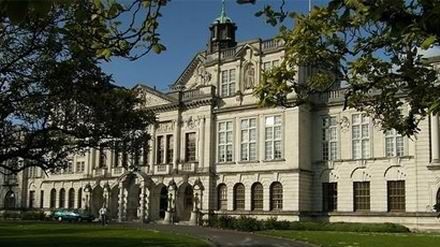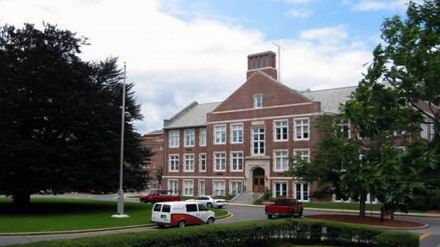托福阅读对于词汇量的要求很高,大家都是怎么进行托福阅读的复习的,如果你快考试了,和出国留学网小编一起来看看2018年5月26日托福阅读考试预测。
•P1: Urbanized societies, in which a high proportion of the population lives in P cities, developed only in the nineteenth and twentieth centuries. The process of urbanization has moved rapidly in the entire world since 1800, and the peak is not yet in sight. In the United States, early New England towns, formally disposed along wide elm-lined central roadways or commons, exhibit a conscious planning. In discussing the growth of cities in the United States in the nineteenth century, one cannot really use the term "urban planning", as it suggests modern concerns for spatial and service organization which, in most instances, did not exist before the planning revolution called the City Beautiful Movement that began in the 1890s. While there certainly were urban areas that were "planned” in the comprehensive contemporary sense of the word before that date, most notably Washington, D.C., these were the exception. Most “planned" in the nineteenth century was limited to areas much smaller than a city and was closely associated with developers trying to make a profit from a piece of land.
•P2: Three forces particularly affected the configuration of urban and suburban areas in the nineteenth century: economics, transportation technology, and demographics. Added to these was the characteristic American preference for independent living, including separate neighborhoods for themselves by building mansions on large plots of land at the edges of the cities or in the countryside. Economic development stemmed from the Industrial Revolution of the 19th centuries transformed urban life and gave people higher expectations for improving their standard of living. The increased number of jobs, along with technological innovations in transportation and housing construction, encouraged migration to cities. People no longer had to live within walking distance their jobs. Commuting into the city to work became easier and cheaper with constant transportation system improvements and increased ridership.
•P3: Demographic patterns also accounted for the urbanization. Urban populations grew steadily due to rural immigrants gravitated to the cheap housing and to the promise of work in or near the center of cities or around factories and emigration from around the globe. As the 19th century drew to a close, the rapid development of cities served as both a uniting and dividing factor in American social, economic, and political life. Cities attracted a rich cross-section of the world's population, creating a various, metropolitan atmosphere. At the same time, cities forced people from entirely different backgrounds to live and work together in close proximity for the first time, which contributed to diverse urban problems.
•P4: Many nineteenth-century urban problems continue to plague cities today, especially those associated with sanitation and mega-fires resulted from lack of planning and regulation. The growth of cities outpaced the ability of local governments to extend clean water, garbage collection, and sewage systems into poorer areas, so conditions in cities deteriorated. Sanitary sewers at that time failed to stop the spread of typhoid, increased its infection rates downstream of sewer outlets, and the miasmatic gasses they were designed to mitigate turned out to not exist. It was not until the 1860s that any serious, concerted effort was made to develop proper systems for water delivery and sewage removal, which caused water contamination and the spread of disease by rodents and insects. During the 19th century, the United States was afflicted with many urban conflagrations and wildfires as tactical firefighting and prevention practices were underdeveloped. Construction with combustible materials coupled with close placement of buildings and the use of open flames in heating, cooking, and lighting meant that the potential for raging fires was ever present.
• P5: Cities in the late 19th century were large, compacted, and impersonal places devoted to making money. Typically, development was both unplanned and unrestricted, with landowners making all choices of lot size, services, and street arrangement based only on their individual needs in the marketplace. Not surprisingly, corruption was rampant in city government and city services, in the construction industry, and among landlords and employers. High rents, low wages, and poor services produced misery in the midst of abrupt economic growth.
题目:
1. Which of the sentences below best expresses the essential information in the highlighted sentence in the passage? Incorrect choices change the meaning in important ways or leave out essential information.
A. Understanding the growth of cities in nineteenth-century America requires recognizing how the City Beautiful Movement of the 1890s changed "urban planning.
B. For the most part, there was no "urban planning,” as that term is understood today, before the beginning of the City Beautiful Movement in the 1890s.
C. Concerns for spatial and service organization had little impact on the growth of cities before the 1890s when the City Beautiful Movement began.
D. The growth of cities in nineteenth-century America resulted in the creation of the City Beautiful Movement in the 1890s and the rise of the term “urban planning.”
2. According to paragraph 1, Washington, D.C. was
A. A a typical nineteenth-century American city
B. B a city that was planned in separate sections by land developers
C. C the very first city in America to be described as “planned”
D. D one of the few cases of true urban planning in America before the 1890s
3. Select the TWO answer choices that, according to the paragraph 1, best describe most urban plans in the nineteenth century. To receive credit, you must select TWO answers.
A. They were created to profit land developers.
B. They typically affected only part of a city rather than the whole city.
C. Their success sometimes directly led to other necessary improvements in cities.
D. They were carefully reviewed by city governments.
4. In paragraph 2, the author mentions the characteristic American preference for independent living to
A. identify one of the factors that affected the configuration of urban and suburban areas in America in the nineteenth century
B. explain which of the three forces mentioned—economics, transportation technology, and demographics—was the most important in shaping American cities and suburbs
C. explain how decisions were made in American nineteenth-century cities and suburbs about locations for businesses and factories
D. provide evidence showing that industrial growth was able to generate higher incomes for much of the population in nineteenth-century cities and suburbs in America





 湘公网安备 43011102001150号
湘公网安备 43011102001150号

